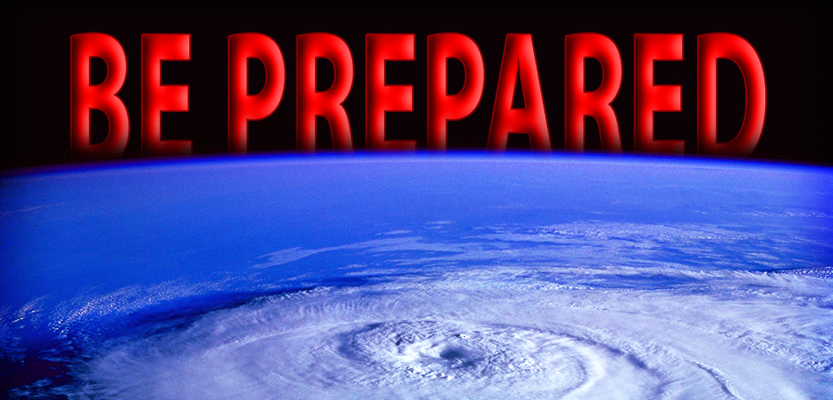With the summer comes rain, humidity and the unfortunate occasional hurricane in South Florida. As a business owner you want to be prepared for whatever nature throws your way.
That means having a few things completed to ensure you survive the season with minimal to no issues.
If done right you can develop an effective plan with a ready business hurricane toolkit.
Here’s a list that will help guide you towards creating a hurricane contingency plan:
1) Organize and write down a plan
First of all, do you have a business continuity plan? This might seem obvious to some, but planning in advance will dramatically increase your chances of recovering quickly after a hurricane.
Any business recovery plan should at the very least include a step-by-step procedure on what to do.
You can format this plan however you choose so long as it functions as a business continuity-hurricane plan.
If you’re a business that cannot afford to be down longer than a few days, have a contingency plan that will hasten the process.
2) Perform an off-site data backup and storage
You now have to make sure any documentation and data that is essential for running your business is safe and secure.
Back-up your data or convert any physical documents into digital. A natural disaster like a hurricane is a huge threat to infrastructure and can make accessing an office building next to impossible if there’s flooding or power outages.
Make sure those back up files are protected and encrypted so that they remain safely in the care of your company.
3) Automate your back-ups
This should be considered an always rule. Whether at risk of being struck by a hurricane or not, it’s of the utmost importance you’re backing up all your data consistently.
If you rely on human beings to keep track of all backups at all times they’re likelier to forget or make mistakes. Do not take any risk with something so simple.
Nerds Support performs automatic back-ups for all its partners daily.
4) Communicate with your team
Make sure you establish a credible and reliable line of communication with employees and key members of your company.
Everyone needs to understand their role in the event of a storm and must be ready to undertake the tasks required of them at a moment’s notice.
Have a designated phone number that everyone on your team can contact if there’s an outage or emergency before, during and after the storm.
5) If necessary, get professional assistance
Trying to recover data after a hurricane without the technical know how can be onerous and exhausting at best.
At worst, it can severely hurt your business, resulting in lost data and weeks of downtime. This is something you’d want to avoid as much as possible.
Consider hiring an Managed IT services provider, like Nerds Support, who have experience working with business continuity plans, can help you recover your data, manage all IT hardware and software.
6) Establish redundant systems
Establish redundant servers for all important data. This means providing alternate ways of accessing your data should primary methods of access be unavailable.
Also having these redundant systems can expedite recovery from days to hours or even minutes.
7) Image (Copy) your servers
Having multiple copies and access points for your data offsite is good, but keep in mind that data has to be restored for it to be useful.
Imaging your servers is essentially creating exact replicas of the servers, which can then be transferred or copied somewhere else.
By imaging your servers you don’t have to worry about losing system preferences or specific configurations.
8) Protect hardware and infrastructure as much as possible
If you have any cables, outlets or sensitive hardware, make sure you keep it stored in an elevated area in case of flooding.
Any additional hardware you wish to protect, cover it in sturdy plastic or tarpaulin material should there be any leakage.
This will establish facility hurricane preparedness, something that is often overlooked but can make a huge difference.
These small maintenance procedures can go a very long way and save you time better spent on other business related matters.
9) Be on the lookout for scams
Keeping number 8 in mind, you need to keep track of security on your network as well as hardware.
Natural disasters like hurricanes and floods are a threat but it’s likelier to experience some sort of cyber-attack in this period.
Cyber-attacks like malware, phishing scams, and other forms of human engineering occurs more frequently when businesses are most vulnerable (i.e. after a natural disaster). Keep all of your data secure and all of your software security up-to-date.
10) Test, Test, TEST!
Test your disaster recovery plan as often as possible especially if you’re a small business.
An emergency plan for small businesses has to be exact and precise in order to recover properly and avoid losing profit.
If you’re going to set up a plan then testing it to make sure there are as few flaws and inconsistencies as possible will ensure its successful implementation.
Testing ensures everyone involved is prepared and updated on the procedures. And the more you test the easier it becomes to find the best ways of implementing the plan.
Download Nerds Support’s free e-book today to learn more about securing your tech and be fully prepared this hurricane season!



